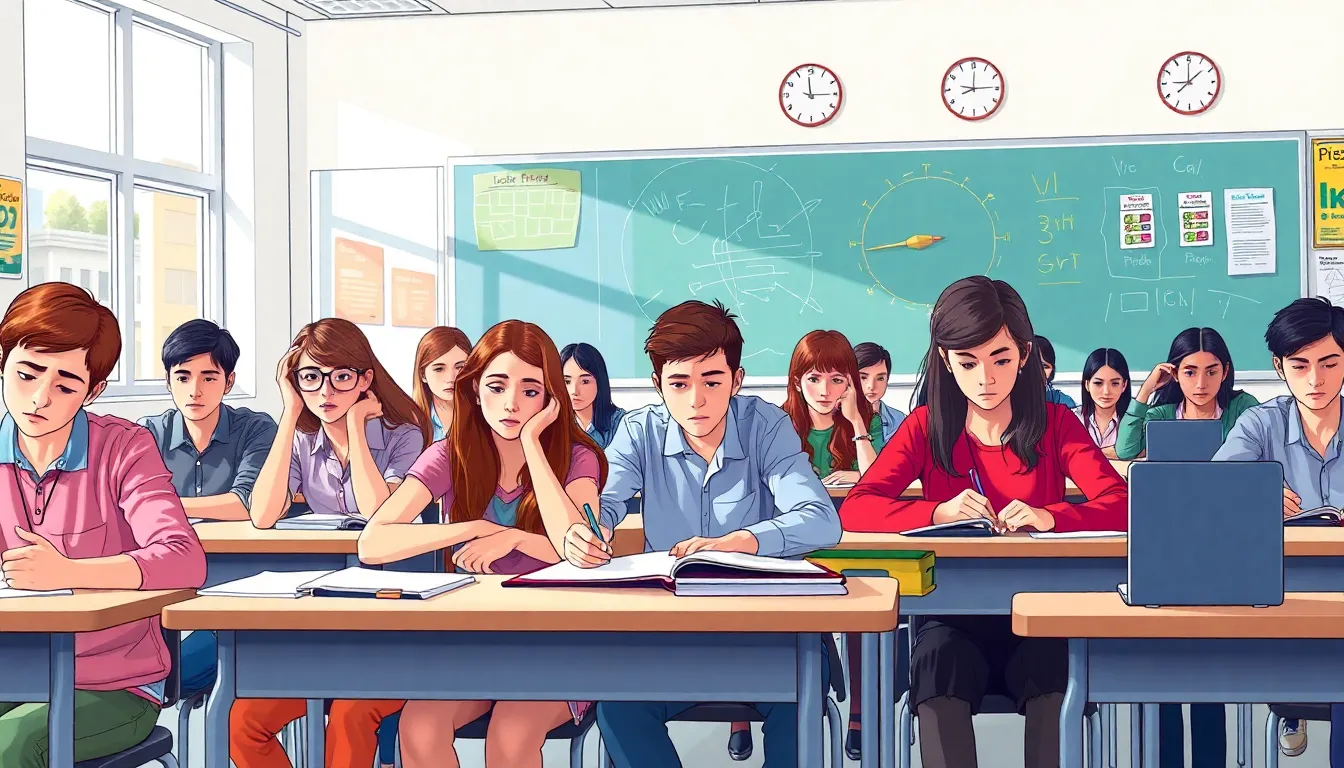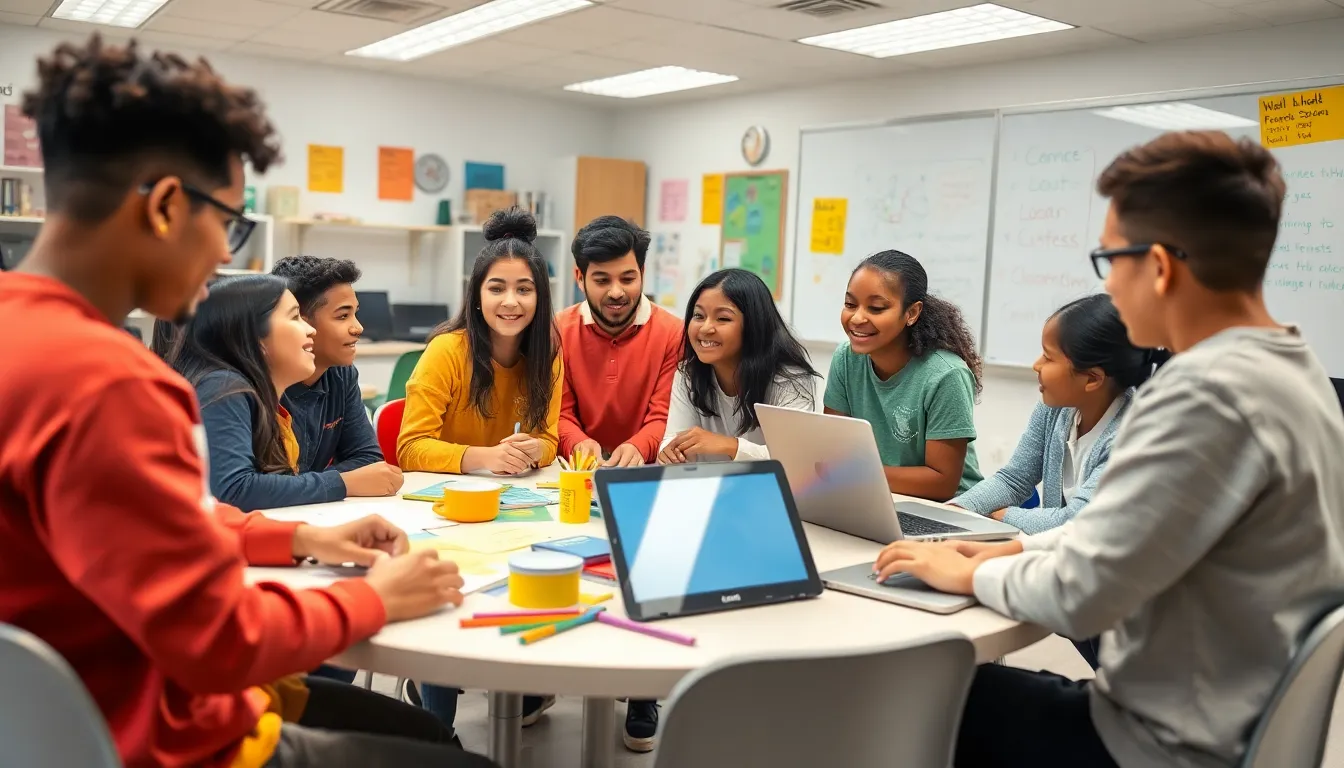Education should be the golden ticket to success, yet many students find themselves stuck in a never-ending game of educational whack-a-mole. From outdated curricula to overcrowded classrooms, the challenges in today’s educational landscape can feel like an obstacle course designed by a mischievous gremlin. It’s no wonder students and teachers alike are scratching their heads, wondering if they accidentally enrolled in a reality show.
Table of Contents
ToggleOverview of Problems in Education Today
Outdated curricula hinder student engagement and relevance in the learning process. Overcrowded classrooms complicate individualized attention, leading to ineffective teaching strategies. Lack of funding restricts resources for schools, impacting technology integration and extracurricular programs. Educational inequalities create disparities in access to quality education, affecting performance across socioeconomic backgrounds.
Teacher burnout escalates due to high demands and insufficient support, affecting student success. Standardized testing pressures educators and students, often prioritizing test scores over critical thinking and creativity. Limited parental involvement contributes to a disconnect between home and school, reducing students’ motivation and accountability.
Mental health issues among students increase, with inadequate support systems in place. Additionally, technology dependence can lead to distractions, making it challenging for students to focus on their studies.
These problems collectively paint a troubling picture of today’s educational landscape, where students and educators navigate a complex environment. Each issue, though distinct, intertwines, exacerbating the overall challenges faced by the system.
Major Issues Facing Students

Today’s educational environment presents numerous challenges for students. Mental health issues significantly affect student performance and overall well-being. Increased academic pressure contributes to anxiety and depression among youth. More than 50% of students report feeling overwhelmed, leading to a rise in absenteeism. Schools often lack adequate mental health resources, making it difficult for students to receive necessary support.
Educational inequality perpetuates disparities in access to quality learning experiences. Low-income students frequently encounter outdated facilities, limited technology, and underqualified teachers. Statistics show that students in underfunded districts are three times more likely to drop out. Disparities in funding exacerbate these challenges, leading to significant gaps in educational outcomes. Such inequalities hinder students from reaching their full potential in an increasingly competitive world.
Teacher-Related Concerns
Concerns related to teachers significantly impact the educational experience today. Several key issues contribute to their effectiveness and job satisfaction.
Low Salaries and Job Satisfaction
Low salaries contribute to discontent among educators. Teaching often ranks among the lowest-paying professions, with average annual salaries around $60,000, markedly below that of similarly educated professions. Limited financial compensation leads to feelings of undervaluation, which diminishes job satisfaction. Many teachers report struggling to make ends meet, creating stress that affects classroom performance. High demands and limited resources exacerbate this dissatisfaction, making it challenging for teachers to stay engaged. Ultimately, low pay and dissatisfaction create an environment where talented individuals may pursue alternative careers.
Teacher Turnover Rates
High turnover rates in education create instability within schools. According to data from the National Center for Education Statistics, nearly 20% of new teachers leave the profession within five years. This turnover disrupts student learning and strains remaining staff. Frequent changes in educators hinder the development of meaningful teacher-student relationships, which are crucial for effective learning. Many factors contribute to this problem, including burnout, inadequate support, and challenging work conditions. Schools facing high turnover often struggle to maintain consistency in teaching quality, contributing to overall educational challenges.
Curriculum Challenges
Curriculum challenges significantly hinder effective teaching and learning.
Outdated Teaching Materials
Outdated teaching materials limit engagement and relevance in the classroom. Many textbooks used in schools are years old, failing to reflect current knowledge and advancements. Students often struggle to connect lessons to real-life scenarios and current events. Teachers face difficulties presenting accurate and engaging content due to the lack of updated resources. Material that doesn’t reflect diverse perspectives creates barriers to inclusivity. Schools lacking funding for new resources exacerbate these issues, leaving educators and students at a significant disadvantage. Staying current with educational trends is essential to foster a stimulating learning environment.
Lack of Real-World Application
Engaging students often requires a connection to real-world application. Many curricula lack opportunities for hands-on learning and practical experiences relevant to students’ lives. Without real-world context, concepts can feel abstract and uninspired. Educators struggle to motivate students who see little significance in what they learn. When lessons don’t align with career skills or practical applications, students may disengage. Schools with minimal partnerships with local businesses miss opportunities to enrich learning through internships and project-based learning. This disconnect ultimately hampers students’ readiness for life beyond the classroom.
The Role of Technology
Technology plays a critical role in addressing educational challenges today. However, it also introduces unique problems that schools must navigate.
Digital Divide
Access to technology varies significantly among students. Socioeconomic factors often dictate whether households have reliable internet and devices. In underfunded districts, about 20% of students lack adequate access to learning tools, which hampers educational equity. Rural areas face additional challenges, as connectivity may be inconsistent or non-existent. The gap leads to disparities in learning opportunities and outcomes. Without equal access, students struggle to engage with technology-enhanced curricula. Solving the digital divide is essential for creating a level playing field in education.
Over-Reliance on Technology
Dependence on technology can detract from critical thinking skills. Educators often find that students rely on digital devices for answers, impairing their ability to analyze information independently. This reliance can result in superficial learning rather than deep understanding. Teachers also face challenges in fostering meaningful interactions when devices dominate classroom environments. Balancing technology use with traditional teaching methods is crucial to maintain student engagement and promote creativity. Furthermore, technology can distract students, diverting attention from essential classroom activities. Finding the right equilibrium supports both technology integration and foundational skill development.
The complexities of today’s educational landscape present significant challenges for both students and educators. As outdated curricula and overcrowded classrooms persist, the need for reform becomes increasingly urgent. Addressing issues like funding disparities and teacher burnout is vital to creating a more supportive environment.
Moreover, recognizing the impact of mental health on student performance and well-being is essential for fostering a positive learning atmosphere. By prioritizing innovative solutions and equitable access to resources, stakeholders can work toward a more effective education system that empowers all learners. The future of education hinges on collective efforts to navigate these obstacles and enhance the overall experience for everyone involved.




